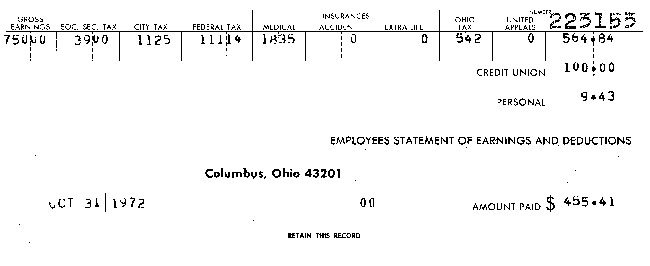This increase amount of stuff has lead to a significantly larger house. She says the median number of rooms increase from 5.8 to 6.1. What she doesn't say is the average (not median) house increase from 1400 sq feet in the 70s to over 2300 sq feet now days. So we are getting bigger houses to hold the more stuff we have. Contrary to we she implies the material prosperity of 2000 family is significantly greater than the 70s.
clif, I would check to see that you are comparing the median (or avg.) of new+old sq. ft. and not just 2300s.f. as a (med./avg.) for NEW construction. I took her number to include the entirety of the housing market.
Please also don't fall into the trap of the average being higher than the median. Bill Gates' house is quite large indeed. As his income skews the avg., so does his house size. Median is probably more informative.
It's true some people may have somewhat more stuff and somewhat more space.. but I have two thoughts on that:
1.) "material prosperity" is not real if it is simply a function of debt
2.) I think you and others here (even me) have a mental picture of the McMansion and the 2 SUVs, etc. that might be more prevalent in our imagination than it is in the US at large. People here on the board are relatively prosperous and so those spendy folks are our neighbors.. maybe we don't "see" the people living in the same old small houses and tenements in Mississippi or the Bronx or Detroit or Ohio. Visiting my sis years ago in LA.. what "stood out" to me were not the occasional Ferarris and Cayennes and Dodge Vipers but the massive number of completely derelict beaters that were still on the roads, held together with duct tape and baling wire. It depends on your pov.. your mental "filter".
Just remembered that we also had a barbershop and a ladies' salon w/in walking distance. Gone now. Oldbabe, thanks for that idyllic snapshot.. maybe it's my age or the area.. but we no longer had milk/bread deliveries (actually a few people still had milk).. some families (not ours) DID have a snack delivery.. big metal tins of "Charles' Chips". These were rigourously kept on top of the refrigerator.
Just thinking of that pattern, though.. imagine the efficiency of one truck going around to deliver daily milk/bread. Sure, a lot of miles.. but far fewer than having everyone get in their car individually to drive to the store. Plus, less need for parking space when you do get to the store. It's CFB's recognition of expenses continuously being offloaded onto the consumer. DIY promoted as cheaper with no regard for externalities. The milk/bread company saves X in not having the truck and driver, so bread in theory costs a few pennies less. But consumers have to chip in X*A in the aggregate to buy more cars and gas. Instead of one truck with 500 gallons of milk and another with 500 loaves of bread, you have 500 cars with one gallon of milk and one loaf of bread each. Stores chip in X*B to buy more land for parking. State (taxpayers) chip in X*C for more roads that lead to more stores. Etc.
Hence, we observe that bread prices have nominally only increased a certain amount. Taken like that, it seems like there's little inflation.
Then we can conveniently blame the middle class person for their "optional" second car and their "voluntarily" increased gas consumption... just to have ACCESS to the loaf of bread. Oy.




